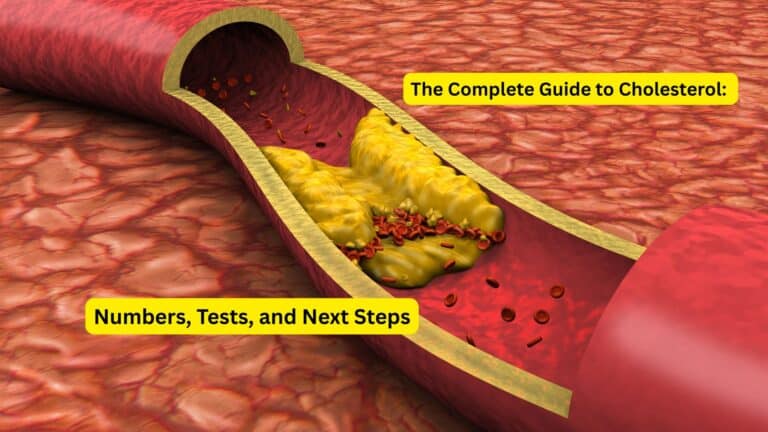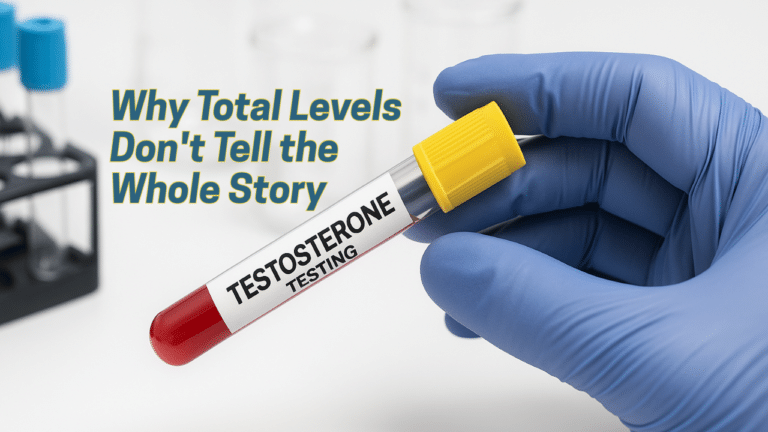Every second of every day, your cells engage in a delicate balancing act that determines how gracefully you age. At the heart of this process lies the intricate relationship between free radicals and antioxidants—molecules that can either accelerate cellular damage or protect against it. Understanding this cellular dance is crucial for anyone interested in maintaining vitality as they age, as the accumulation of oxidative damage plays a central role in everything from wrinkles to serious age-related diseases. This guide will help you grasp these fundamental concepts and discover how laboratory testing and lifestyle choices can support your long-term cellular health.
What Are Free Radicals and Oxidative Stress?
Free radicals are highly reactive, unstable molecules that your body produces naturally during cellular metabolism—think of them as the cellular equivalent of sparks flying from a campfire. These molecules, technically called reactive oxygen species (ROS), are missing an electron, making them desperate to steal one from nearby cellular components like DNA, proteins, and lipid membranes.
While your body naturally produces free radicals during normal processes like breathing and energy production, external factors significantly increase their formation. Exposure to UV radiation, air pollution, cigarette smoke, and even intense exercise can flood your system with these reactive molecules. When free radicals overwhelm your body’s natural defenses, the result is oxidative stress—a state where cellular damage accumulates faster than it can be repaired.
This damage isn’t immediately visible, but over time, oxidative modifications to proteins can impair cell function, DNA damage can lead to mutations, and lipid peroxidation can compromise cell membrane integrity. The cumulative effect of this molecular mayhem contributes significantly to the aging process and the development of age-related diseases.
The Double Role of Free Radicals
Surprisingly, free radicals aren’t entirely villainous—they’re more like fire, which can destroy a house or provide essential warmth and energy. In moderate amounts, ROS act as important signaling molecules that help regulate immune responses, support wound healing, and even facilitate the beneficial adaptations that occur with exercise.
The Beneficial Side
When you exercise, your muscles produce controlled amounts of free radicals that trigger adaptations like increased antioxidant enzyme production and improved cellular resilience. This process, known as hormesis, demonstrates why your body needs some oxidative stress to maintain optimal function. Free radicals also help your immune system eliminate harmful bacteria and damaged cells.
The Harmful Side
Problems arise when this delicate balance tips toward excessive free radical production. Chronic oxidative stress drives cellular senescence (when cells stop dividing and become dysfunctional), promotes chronic inflammation often called “inflammaging,” and accelerates the breakdown of cellular structures. This imbalance contributes to visible signs of aging and increases the risk of cardiovascular disease, cancer, and neurodegenerative disorders.
The key isn’t eliminating free radicals entirely—it’s maintaining the right balance between their production and your body’s ability to neutralize them safely.
Antioxidant Defense Systems
Your body has evolved sophisticated defense mechanisms to keep free radicals in check, operating like a well-coordinated security system with multiple layers of protection.
Enzymatic Antioxidants
Your first line of defense consists of specialized enzymes that your cells produce naturally:
Superoxide dismutase (SOD) converts dangerous superoxide radicals into less harmful hydrogen peroxide. Catalase then breaks down hydrogen peroxide into harmless water and oxygen. Glutathione peroxidase works alongside the powerful antioxidant glutathione to neutralize various types of free radicals and repair oxidative damage to lipids and proteins.
These enzymatic antioxidants are incredibly efficient, capable of neutralizing thousands of free radicals per second. However, their activity naturally declines with age, leaving older adults more vulnerable to oxidative stress.
Non-Enzymatic Antioxidants
Your second line of defense includes molecules you obtain from food or that your body produces in smaller quantities:
Vitamin C is water-soluble and protects cellular fluid from free radical damage while regenerating other antioxidants. Vitamin E guards cell membranes against lipid peroxidation. Glutathione, often called the “master antioxidant,” works throughout the cell to neutralize free radicals and support detoxification processes.
Plant compounds like flavonoids and polyphenols from colorful fruits and vegetables provide additional antioxidant support. These compounds work synergistically with your body’s natural antioxidants, often regenerating each other in an elegant molecular recycling system.
Oxidative Stress and Aging
The relationship between oxidative stress and aging forms the foundation of one of the most widely studied theories in gerontology. As we age, several factors conspire to tip the balance toward increased cellular damage.
Genomic instability occurs when free radicals damage DNA faster than repair mechanisms can fix it, leading to mutations that can impair cellular function or contribute to cancer development. Protein aggregation happens when oxidative damage causes proteins to misfold and clump together, interfering with cellular processes and contributing to diseases like Alzheimer’s.
Perhaps most significantly, chronic oxidative stress fuels inflammaging—a state of chronic, low-grade inflammation that drives many age-related diseases. This persistent inflammatory response creates a vicious cycle where inflammation generates more free radicals, which cause more damage and inflammation.
The accumulation of oxidatively damaged cellular components also contributes to cellular senescence, where cells stop dividing but remain metabolically active, often secreting inflammatory compounds that affect neighboring healthy cells. This process, combined with the gradual decline in antioxidant enzyme activity, explains why age-related diseases tend to cluster and why aging accelerates over time.
Recent Research Insights
Scientific understanding of free radicals and aging has evolved significantly beyond the simple “free radicals are bad” narrative. Modern research reveals a much more nuanced picture of how oxidative stress contributes to aging.
Studies now show that age-related changes in antioxidant enzyme activity vary significantly between individuals, suggesting that genetic factors, lifestyle choices, and environmental exposures all influence how well we maintain our antioxidant defenses over time. Some people naturally produce higher levels of protective enzymes, while others may need more support through diet and lifestyle interventions.
The evidence on antioxidant supplementation has been particularly eye-opening. Large clinical trials have shown mixed results, with some studies suggesting that high-dose antioxidant supplements might actually interfere with beneficial cellular processes. This has led researchers to focus more on the concept of redox signaling—the idea that aging results from disrupted cellular communication rather than simple oxidative damage.
This newer perspective suggests that maintaining optimal cellular function requires the right balance of oxidants and antioxidants, not just maximum antioxidant protection. It also explains why natural dietary antioxidants, which come in balanced combinations with other beneficial compounds, tend to be more effective than isolated supplements.
Lifestyle and Nutrition for Cellular Health
The most effective strategies for maintaining healthy cellular aging focus on supporting your body’s natural antioxidant systems while minimizing excessive free radical production. Rather than relying solely on supplements, research consistently shows that comprehensive lifestyle approaches yield the best results.
A diet rich in colorful fruits and vegetables provides diverse antioxidants that work synergistically to protect your cells. Berries, leafy greens, nuts, green tea, and dark chocolate contain particularly potent combinations of flavonoids and polyphenols. The Mediterranean diet pattern, emphasizing these foods along with healthy fats from olive oil and fish, has been extensively studied for its anti-aging effects.
Regular physical activity paradoxically helps by initially increasing free radical production, which triggers your cells to boost their antioxidant defenses—a perfect example of hormesis in action. This adaptive response makes your cells more resilient to future oxidative stress.
Equally important is avoiding unnecessary sources of oxidative stress. Smoking dramatically increases free radical production throughout the body, while excessive sun exposure without protection generates skin-damaging ROS. Even chronic psychological stress can increase oxidative burden through elevated cortisol levels and inflammatory pathways.
Quality sleep and stress management aren’t just nice-to-haves—they’re essential for cellular repair processes and maintaining optimal antioxidant function. During sleep, your cells clear out damaged proteins and regenerate antioxidant systems depleted during the day.
Testing Cellular Health: Oxidative Stress Biomarkers
Understanding your personal oxidative stress levels and antioxidant capacity can provide valuable insights for optimizing your cellular health strategy. Modern laboratory testing offers several reliable biomarkers that reflect the balance between free radical production and antioxidant defenses.
8-hydroxydeoxyguanosine (8-OHdG) serves as a gold standard marker for DNA oxidative damage. Elevated levels indicate that free radicals are damaging your genetic material faster than repair mechanisms can fix it. This biomarker has been linked to increased risk of cancer and accelerated aging.
Oxidized proteins and lipid peroxidation products provide additional windows into cellular damage, showing how free radicals are affecting different types of cellular components. Meanwhile, measuring the activity of key antioxidant enzymes like superoxide dismutase and glutathione peroxidase reveals how well your natural defense systems are functioning.
Walk-In Lab offers comprehensive oxidative stress panels that measure these crucial biomarkers, giving you objective data to guide your cellular health decisions. These tests can help identify whether your current lifestyle provides adequate antioxidant protection or if you might benefit from targeted interventions.
Regular monitoring can also track how lifestyle changes affect your cellular health over time, allowing you to fine-tune your approach for optimal results. This personalized data takes the guesswork out of anti-aging strategies and helps you focus on interventions most likely to benefit your unique biological profile.
FAQ Section
Q: What are free radicals?
A: Free radicals are unstable molecules that damage cells if not neutralized by antioxidants. They’re produced naturally during metabolism and by external factors like pollution and UV radiation.
Q: Can oxidative stress be measured?
A: Yes, laboratory tests can measure biomarkers like 8-OHdG for DNA damage, oxidized proteins, and antioxidant enzyme activity to assess your oxidative stress levels and antioxidant capacity.
Q: Do antioxidant supplements prevent aging?
A: Research shows mixed results for high-dose supplements. Natural antioxidants from a balanced diet combined with healthy lifestyle choices are more consistently effective for supporting healthy aging.
Q: What habits reduce oxidative stress?
A: Eating antioxidant-rich foods, exercising regularly, getting quality sleep, managing stress, and avoiding smoking and excessive sun exposure all help maintain a healthy balance between free radicals and antioxidants.
Q: Are free radicals always harmful?
A: No, moderate levels of free radicals serve important functions like supporting immune responses and triggering beneficial adaptations to exercise. The key is maintaining proper balance rather than complete elimination.
Q: How does age affect antioxidant defenses?
A: Antioxidant enzyme activity naturally declines with age, making older adults more susceptible to oxidative damage. This is why lifestyle interventions become increasingly important as we age.
Conclusion
The intricate relationship between free radicals and antioxidants fundamentally shapes how we age at the cellular level. While free radicals can cause significant damage when left unchecked, they also play essential roles in cellular signaling and adaptation. The key to healthy aging lies not in eliminating free radicals entirely, but in maintaining the delicate balance that allows your cells to function optimally while protecting against excessive damage.
Understanding this balance empowers you to make informed decisions about your health. By adopting an antioxidant-rich diet, maintaining regular physical activity, managing stress, and avoiding unnecessary sources of oxidative stress, you can support your body’s natural defense systems and promote cellular resilience.
Laboratory testing adds precision to this approach, providing objective measures of your oxidative stress levels and antioxidant capacity. This personalized data helps you move beyond generic recommendations to develop targeted strategies that work for your unique biological profile.
Ready to take control of your cellular health? Order your oxidative stress panel today to discover how well your antioxidant defenses are protecting against aging and age-related diseases.
This article is for informational purposes only and is not a substitute for professional medical advice. Always consult with a healthcare provider before making significant changes to your health routine or interpreting laboratory results.






